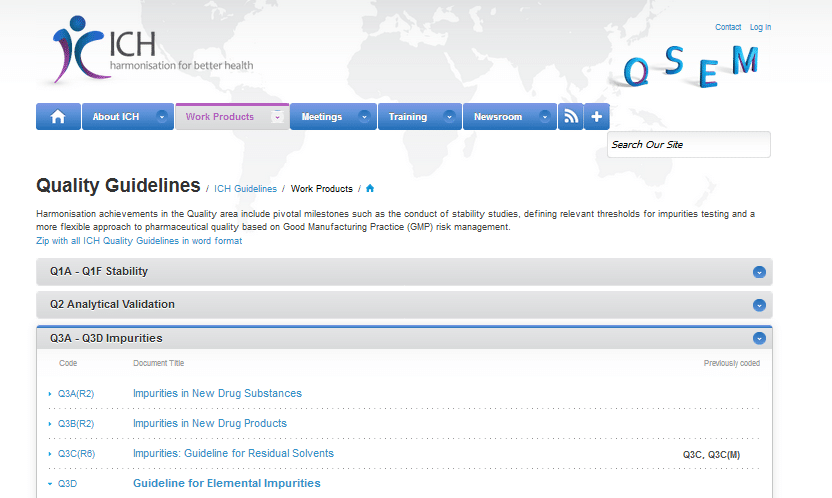New ICH guideline Q3D on elemental impurities (EMA/CHMP/ICH/353369/2013)
Elemental impurities guideline
What is it…
The ICH has introduced this new guideline to control the elemental impurities that may be present in drug products. It replaces EMEA guidance on Specification limits for residues of metal catalysts or metal reagents (EMEA/CHMP/SWP/4446/2000).
This guideline applies to new drug products (with a new drug substance) and to drug products containing existing drug substances. There are some exemptions, which you can find in the guideline.
It does not apply to drug products used during clinical research stages of development.
CHMP implementation dates for this guideline are
• New MA application for new products (new drug substance) – June 2016
• New MA application for products with existing drug substance – June 2016
• Marketed products including new MR applications of already approved products – Dec. 2017
What does this mean for you?
Elemental Impurities (EIs) in Drug Product (DP) may arise from several sources. They may be residual catalysts that were added intentionally or may be present as impurities (e.g., through interactions with processing equipment, container/closure systems or by being present in components of the drug product, i.e. drug substance, excipients or water).
Because EIs do not provide any therapeutic benefit to the patient, their levels in the drug product should be controlled within acceptable limits. These limits are outlined in the new guideline.
This guideline presents a process by which to assess and control EIs in the drug product using the principle of Risk Management as described in ICH Q9. This process provides a platform for developing a risk based control strategy to limit EIs in the DP.
The Risk Assessment (RA) should be based on scientific knowledge and principles. It should link to safety considerations for patients with an understanding of the product and its manufacturing process, and it should be focused on assessing the level of EIs in a DP in relation to the Permitted Daily Exposure (PDE) presented in the guidance.
The summary of RA and any measures taken, to ascertain compliance and the overall control strategy for EIs, including any specification as needed, should be provided in the Regulatory dossier.
The documentation of RA should be maintained in company’s quality system and should be kept for inspection (at the time of GMP inspection of the site by the competent authority).
If RA fails to demonstrate that an EI level is consistently less than the Control Threshold, then additional controls should be established to ensure that the EI levels does not exceed the PDE in the drug product. Approaches that an applicant can pursue include but are not limited to:
• Modification of the manufacturing steps that result in reduction of EIs,
• Implementation of in-process controls,
• Establishment of specification limits for excipients or drug substance or drug product,
• Selection of appropriate container closure systems.
For marketed products, if the RA concludes that additional controls are to be established then the regulatory impact of these additional controls should be evaluated to see whether it triggers a variation(s) to the existing MA.
Where can I find the relevant information…
The new guideline is available on the EMA website. You can find it by following this link.
We can help…
Ivowen are fully equipped to apply for any such variations on your behalf. Please contact us for more information and for support of your dossier compilation or updates.
Written by Nanda Naik


